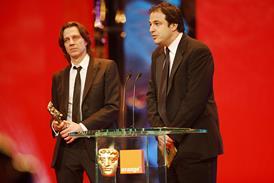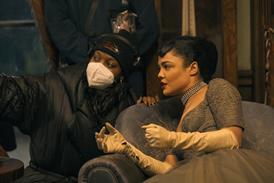In today’s amorphous online world, personal publicists cannot control the image of the stars like they used to. But maybe the tabloid obsession with actors only serves to fuel their public appeal.
Like most journalists in the entertainment business, I was always wary of personal publicists, that unique breed which handles offscreen positioning and presentation of movie stars in the media. My viewpoint changed, however, when Pat Kingsley, the head of then publicity powerhouse PMK, parted ways with her longtime client Tom Cruise.
Cruise’s subsequent PR blunders had a critical, detrimental effect on his career and knocked him off his celestial pedestal. Kingsley, we all came to understand, had brilliantly managed Cruise’s image and carefully controlled media exposure to the man that lay behind the megawatt smile.
Of course publicists only gained power because media and public obssession with movie actors had started spiralling out of control.
The recent death of all time screen queen Elizabeth Taylor brought to light the intrusion of gossip columnists and paparazzi into the colourful personal life of a woman who had been world famous since she was a child. Taylor’s regal class and humanitarian nature outlasted all the scandal, but few can argue with the fascination that she inspired across several generations.
Today the gloves are off and a wildly popular subclass of the tabloid media has emerged which exists to expose the private lives of entertainment industry celebrities. You could say that it has always been there, but it was never at this relentless level, online and in print. It’s a universe which even the most seasoned personal publicist must find hard to navigate and impossible to control.
We see them buying coffee, going to the gym, having lunch, at the wheel of their cars, shopping, in bars and clubs, at airports and, in the case of Charlie, Lindsay and Mel, we see them in trouble with the law. We read about the break-ups and heartaches in minute detail.
There is very little mystery left to our stars.
But then I was in an airport recently and struck by the fact that almost every perfume or cosmetics brand now uses movie stars to endorse their products. Currently starring for high end designer brands are Kate Winslet, Scarlett Johansson, Jude Law, Natalie Portman, Vincent Cassel, Naomi Watts, Julia Roberts, Ryan Reynolds, Sharon Stone, Marion Cotillard, George Clooney, Nicole Kidman, Jonathan Rhys Meyers, Audrey Tautou and many more. I am not sure I want to buy a product which is being peddled on images of Orlando Bloom or Matthew McConaughey, but perhaps thousands would.
So perhaps the movie star allure still works. On the one hand, the appetite for seeing them stripped of movie star trappings is unprecedented. They’re just like you and me, we are told. On the other, we still buy the iconography and the glamour. We are still hungry for the illusion.
In India, even respectable newspapers run gossip stories about movie star romances and scandals as if it were par for the course.
Scurrilous rumours are part of the pact between audiences and their icons, and that is the deal a movie star has to accept in the west these days as well. Scuzzy stories, true or untrue, candid photos, shots of cellulite, wrinkles and bad hair. It’s all part of what the public expects, just as long as their stars look fabulous when they appear on the red carpet or on a perfume ad.
Whether the tabloid stories are true or untrue, the stars are still revered by the public like Liz Taylor and Tom Cruise were in their heyday. It’s a messier, far less elegant world for your average A- lister today, but the public is not as judgmental as we would imagine.
Even Charlie Sheen has successfully built a whole new persona (“The Warlock”) and revenue stream out of his personal woes, a considerable feat bearing in mind the depth of trouble he was in just a few weeks ago. The image is harder to control, but that doesn’t mean it can’t be manipulated in different ways.




















No comments yet